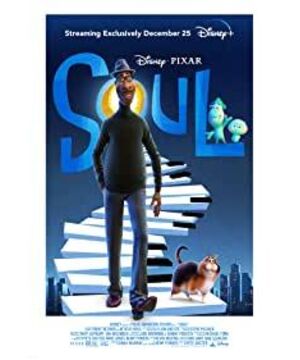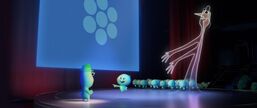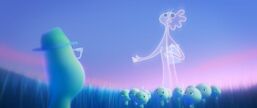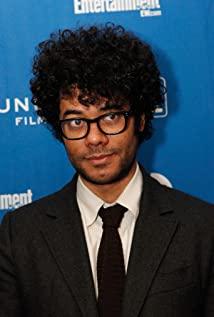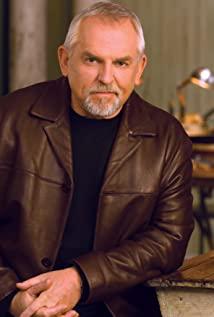In my opinion, an excellent Pixar animated feature film is organically composed of five dimensions: brain-opening creativity + fascinating story + innovative and enterprising technology + otherworldly art + the concept of empathy. So, 13 years after the release of the last "Ratuitou" (also Pixar's highest score holder on MTC) that fully met the standards in five dimensions, I finally waited for this "Spiritual Journey". This article starts from here. The five dimensions are discussed in turn.
A few years ago, after watching Pixar’s "Spirit of the Mind", I left a short comment: "It can only be said that this film is a good work of popular psychology. But the problem is precisely that it is too rigid in science. The above is correct, in fact, there is not much room for imagination. As for non-professionals, the general praise of imagination is unreliable, which just shows that the journey of scientific discovery itself is the most magnificent creation in the world, and art needs to be done. Yes, it goes further than science."
Well, thank goodness, in Pixar’s new work, "A Strange Journey of Mind", the creator did not repeat the same mistakes. Its core setting-the soul and the body can be separated-stood on the opposite of psychology, using Descartes. The dualism of mind and body. Creative creativity has always been the soul of Pixar's work. This time, by throwing away the shackles of science, they fully achieved it. Art doesn't have to accommodate science. The two core scenes of the film, "The Place of Birth" and "The Realm of Ecstasy" are all artistic creations that are full of imagination. Once the creativity stands, the work is half the success.
On this basis, the narrative of "Spiritual Journey" comes with a bold counter-routine. Originally, Pixar's works are known for telling Hollywood-style stories. The plots are often calculated carefully. As long as they are calculated well, the audience will be very useful. And this time, the story is counter-routine from the beginning: watching the opening class scene, you think that the next stage will be a "string moving my heart" style spring wind and rain, but it is just a character background explanation; just as the actor Joe got the coveted opportunity to perform. When you thought he was going to show the peak of his life next, he suddenly fell out of his body; when the performance was successful in the end, you thought there would be some thoughts that would sublimate, but Joe gave another emotion.
Complementing the anti-routine plot, the original soundtrack is also anti-routine. Pixar abandoned the usual grand symphony and replaced it with jazz and electronic music (hip-hop, R&B and rock songs were also inserted in the middle). Among them, jazz music is performed by African-American musician Jon Batiste, including several improvisations, corresponding to the real world in the movie; electronic music is composed by Trent Reznor and Atticus Ross, who once won the statuette with "Social Network", corresponding to the movie Soul world. What is particularly refreshing is the electronic music that Joe walked up Huangquan Road and reborn to the earth bridge section, creating an ethereal and fantasy worldview.
The technical innovation of this film is equally amazing. Comparing to the soundtrack, it is also based on the dichotomy of the real world and the soul world: the handling of the soul world scene is not particularly worth mentioning (the "universe" on the other side of life has good light effects), and for the real world scene, that is, New York For street scenes, the creator adopted the ultimate realistic style and made cartoon-like realism effects, such as a scene in a New York subway car, which highly reproduces the not-so-clean seats of the New York subway, and also features a close-up of the cat's body. Hairballs are almost visually real.
The creation of this kind of visual reality is largely derived from carefully crafted light effects, that is, simulating light sources in various directions in the real world and the shadows they cast to create the visual illusion of the audience. This is clearly reflected in Ms. Dorothea's first appearance on the bar stage and in the barbershop scene, including the different skin colors of different African characters corresponding to different reflectance rates, which are also carefully adjusted. This reminds people of the industry's complaints about the domestic animated film "Jiang Ziya", saying that most of the scenes in the movie seem to have no lights on. What this reflects is that we are far from others in terms of technology and investment. "Spiritual Journey" has a huge light effect team!
After boasting about technology, come to boast about art. Pixar, who made his fortune with 3D animation, always likes to insert (pseudo) 2D clips or side-by-sides in its 3D works to show off its skills (such as the 2D paper-cut animation at the beginning and end of "Dream Quest"). And this time, the 2D content in the movie has been greatly increased, mainly in the soul world, in sharp contrast with the 3D real world. Soon after the opening, the process of Joe falling from the other side of life to the place of birth came once in black and white 2D, and the Jerrys in the place of birth directly adopted 2D modeling-reminding me of Picasso and his collaborators. The style of the work of Julio Gonzales, and the two successors David Smith.
In fact, it is not easy to present these 2D shapes in the 3D world. The animator has produced a large number of wire sculptures (above) to study the appearance changes of Jerrys in different angles and motion states, so that the 2D shapes are not violated. Harmoniously appeared in the 3D animation. In a scene chased by a subway station, Terry hides on a poster of the "Modern Art Exhibition", on which is a flat abstract work in Mondrian style. It is the creator who used a lot of 2D elements for this film. Metaphor. In addition, scenes such as Wanwutang and archives have adopted simple 2D lines and 3D rendering processing, which greatly enhances expressiveness and freshness.
As a heavy art lover, the last thing I can't let go of is the famous paintings that appear in the movies. The most referential painting in this film is "Banjo Lesson" hanging in a prominent place in Joe's house. The creator is the famous African-American artist Henry Ossawa Tanner, who was later seen in the Harlem Renaissance. Seen as a pioneer (Harlem is an African-American community in New York. In the 1920s, the African-American cultural elites living here joined forces to challenge the racial prejudice and discrimination in the mainstream white society). In this painting, the banjo played by the two African ancestors and grandchildren is stereotyped as a white plaything. Corresponding to this movie, it is Pixar’s first animated feature film featuring African Americans. In order to accurately represent the social culture of African Americans, Pixar specially invited a number of cultural consultants, especially the African-American filmmaker Kemp Powers. As the co-director and screenwriter of the film, the barber shop in the film highly restores a New York barber shop that Powers often visits and mainly serves African residents.
Finally, let’s discuss the concept of the film-"live every minute of your life"-from the last line of Joe. There is no doubt that many viewers were moved by this concept, and many of them were in tears. I don't need to be moved by it, because it has long been my philosophy of life. I like to feel the many insignificant moments in my life so much, just as I stop and watch for a moment when the slanting sun shines on the opposite building and the river at 4 o'clock in the afternoon, feeling the beauty of life.
I also met a scene in the film: a trip to New York, early in the morning with hurried New Yorkers rushing forward in the subway tunnel, the journey was tired, as if not awake, suddenly came from the corner in front Familiar music, the whole person woke up all of a sudden-I am here to travel, why should I rush with office workers? So I stopped and listened with a smile, and finally lost a dollar to the player. Only in New York, where I have been to several times, such charming tiny moments are better. They are stored in my memory, like lollipops in the hands of children, which can be taken out and licked from time to time, and then the corners of the mouth are raised.
This simple philosophy of life should be owned by everyone, but most people abandon it or forget it, just like the protagonist Joe in this film. For him, piano and jazz are so important that he can spend his whole life pursuing it. He was extremely happy in those moments when he played the piano; but because of this, he lost too many other happiness in his life and had a strained relationship with his mother. Lack of enthusiasm for students, and never even know the little bit of life of a barber friend. Pursuing the peak of life in music has become a kind of obsession for him, so that it is finally realized (and more people who fail to achieve their goals become the lost souls in the "land of selflessness"), but he feels Feeling lost. Life is a long process, and you have to learn how to spend it. If you only seek the result of life, the ecstasy of that moment will not be worth the richness of the joys, sorrows, sorrows and joys of a lifetime.
Unfortunately, I can't give this film a full five stars like "Ratuitouille". I think the problem lies in the end that is too preaching. It is enough for the whole film to stop abruptly when Joe recalls the countless beautiful moments in his life and forgets to play. The explanation of the 22 follow-up situation can be made into the end of the film. Now the extra 9-minute ending feels like a dog's tail. The idea of this expression has been fully expressed before, and the final preaching is no different from brainwashing. Since Pixar was acquired by Disney, the preaching in Pixar’s works seems to have become more and more important. The core idea of "Ratuitouille" was the anti-elite "Everyone can become a chef". Music talent turned out to be a pure family inheritance, returning to what conservative values!
Even so, "Spiritual Journey" is still Pixar's best animated feature film that I have watched in recent years, so there is this solemnly written film review.
View more about Soul reviews


